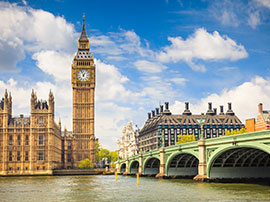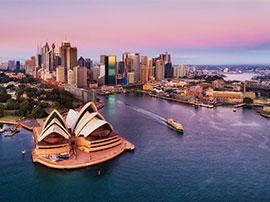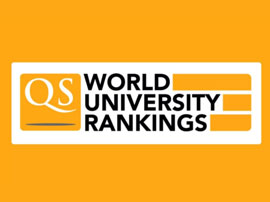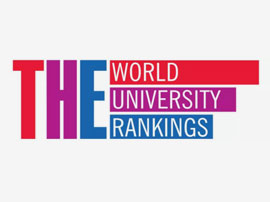- IDP China>
- 课程库>
- 工程与技术>
- 物理科学>
- 化学和物理海洋学>
- Bachelor of Science in Marine and Atmospheric Science - Oceanography
海洋与大气科学理学学士-海洋学
Bachelor of Science in Marine and Atmospheric Science - Oceanography

学历文凭
Bachelor Degree

专业院系
Department of Marine and Atmospheric Science

开学时间

课程时长

课程学费

国际学生入学条件
IDP—雅思考试联合主办方

雅思考试总分
6.5
- 雅思总分:6.5
- 托福网考总分:80
- 托福笔试总分:550
- 其他语言考试:NA
CRICOS代码:
申请截止日期: 请与IDP联系 以获取详细信息。
课程简介
The BSMAS in Oceanography provides a broad foundation in the basic sciences (mathematics, physics, chemistry and biology) and the ocean sciences (physical, chemical, and biological processes in the ocean) as well as elements of geological and atmospheric sciences. Students can choose to specialize in one or more of these sub-disciplines and are strongly encouraged to complete a minor or a second major in Chemistry, Physics, Biology, Geology, Meteorology, Mathematics, Computer Science, or Engineering. These disciplines provide the necessary quantitative foundation from which to study and understand how the ocean works. A double-major is highly desirable for students who want to compete for graduate school and are passionate about going onto a research career in oceanography.<br><br>The Rosenstiel School of Marine, Atmospheric and Earth Science at UM is one of only a handful of academic oceanographic institutions in the US, with over sixty faculty conducting research of local, regional, and global relevance, from red tides in Biscayne Bay to the rapid warming of the Indian Ocean. There are opportunities to interact with and learn from these world-class faculty through classes, labs, reading groups, senior projects, day trips on UM's research vessel Walton Smith (FLOTSUM program), and the semester-long U-Galapagos program.<br><br>The ocean sciences faculty at Rosenstiel School run a number of high-tech facilities, laboratories, and instruments to conduct their research, including CSTARS for the analysis of satellite imagery, SUSTAIN for the study of hurricane-force winds at the ocean surface, cell sorting flow cytometry and mass spectrometry to identify and quantify marine microbes, numerical models to understand ocean circulation and mixing, statistical models to assimilate observations and make predictions, isotopic and radiocarbon analysis to study the ocean's biological carbon pump, a coastal radar network that monitors the Florida Current, and an ocean technology lab with instrumentation that can be deployed for months and years to measure the variability of currents and water properties in the deep ocean.
相关申请
 预科
预科 奖学金
奖学金 实习机会
实习机会 在校学习
在校学习 跨境学习
跨境学习 校园授课-线上开始
校园授课-线上开始 在线/远程学习
在线/远程学习
开学时间&学费
学费信息仅供参考,请与IDP联系以获取详细信息
| 开学时间 | 时长 | 学费 | 地点 |
|---|
学校排名

世界排名201
数据源:
泰晤士高等教育世界大学排名
关于迈阿密大学

迈阿密大学是全美高中生最向往的本科院校之一。想象一下成片的棕榈树,耀眼夺目的海滩,无尽的阳光,加上一群优雅又具备艺术气息的年轻人,这,就是迈阿密大学多彩生活方式的一景。这所每年拥有约3.26亿美元研究资金,全美排名Top50的私立大学,是美国校园环境最优美的大学之一,也是全美高中生最向往的本科院校之一。美式足球是UM出名的主要原因,但不是唯一的原因。UM的男子美式足球队曾经5夺全美冠军,而学术上,海洋科学和音乐专业领域的声名远扬以及非常强势的商科也是UM受人器重很重要的原因。实际上,UM提供180个专业供你选择,而除了本科阶段常规的上课做作业之外,你也可以早早开始你的研究生涯。对此,你既可以选择成为一个轻量级的研究志愿者,也可以用部分学分做一次真正的student researcher。而作为全美最顶尖的研究型大学之一,UM除了提供灵活的研究参与方式之外,还会非常严肃的要求你申请成为一个researcher。UM本科申请竞争激烈但奖励多多,相比于研究生或博士生项目,UM的本科申请竞争要激烈的多。每年所录取的新生几乎都排名各自高中的前10%。而UM能够给予新生们的除了优美的环境,还有慷慨的奖学金。每年录取的新生中,大概有一半的人都能够拿到或多或少的学术奖学金。而如果你在高中属于最顶尖的学生,外加一个漂亮的SAT成绩,恭喜你,你已经成为了全奖的候选人。高中排名略低但不低于前3%的话,每年也可能拿到24000美元的巨款。
本校相关课程

Master of Music in Studio Jazz Writing
学历文凭
Masters Degree
开学日期
课程费用总额


媒体写作和制作音乐硕士
学历文凭
Masters Degree
开学日期
课程费用总额


声乐教学与表演音乐艺术博士
学历文凭
Ph.D.
开学日期
课程费用总额


声乐表演艺术博士
学历文凭
Ph.D.
开学日期
课程费用总额


声乐表演音乐硕士
学历文凭
Masters Degree
开学日期
课程费用总额


音乐治疗音乐硕士
学历文凭
Masters Degree
开学日期
课程费用总额

其他相关课程

Doctor of Philosophy in Oceanography
 康涅狄格大学
康涅狄格大学泰晤士高等教育世界大学排名:382
学历文凭
Ph.D.
开学日期
课程费用总额


物理治疗硕士
 韦仕敦大学
韦仕敦大学学历文凭
Masters Degree
开学日期
课程费用总额


Graduate Certificate in Oceanography
 科罗拉多大学博尔德分校
科罗拉多大学博尔德分校学历文凭
Graduate Certificate
开学日期
课程费用总额


海洋学理学学士
 不列颠哥伦比亚大学
不列颠哥伦比亚大学学历文凭
Bachelor Degree
开学日期
课程费用总额


Master of Oceanography
 罗德岛大学
罗德岛大学泰晤士高等教育世界大学排名:976
学历文凭
Masters Degree
开学日期
课程费用总额


海洋与大气科学理学学士-海洋学
 迈阿密大学
迈阿密大学泰晤士高等教育世界大学排名:239
学历文凭
Bachelor Degree
开学日期
课程费用总额










